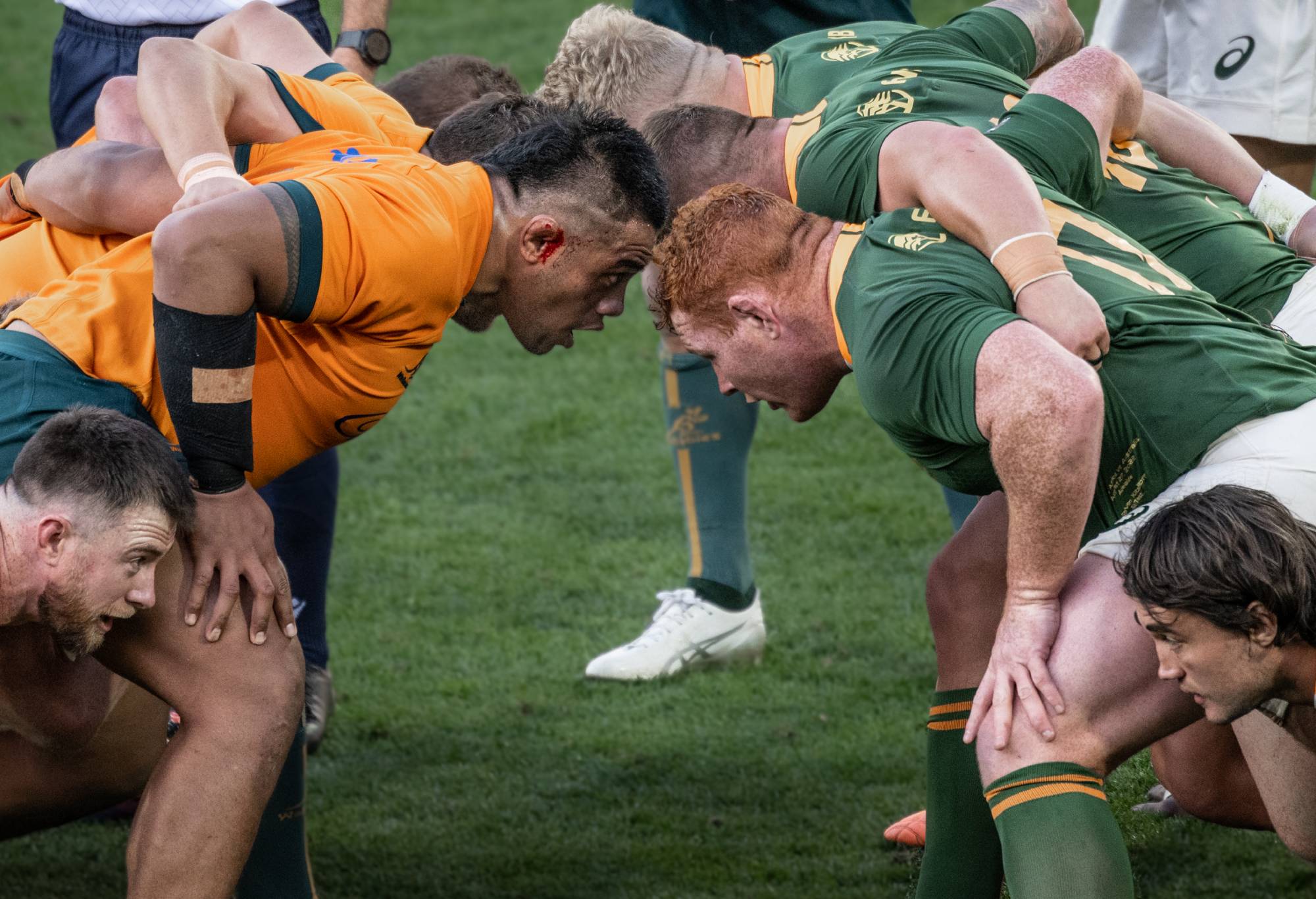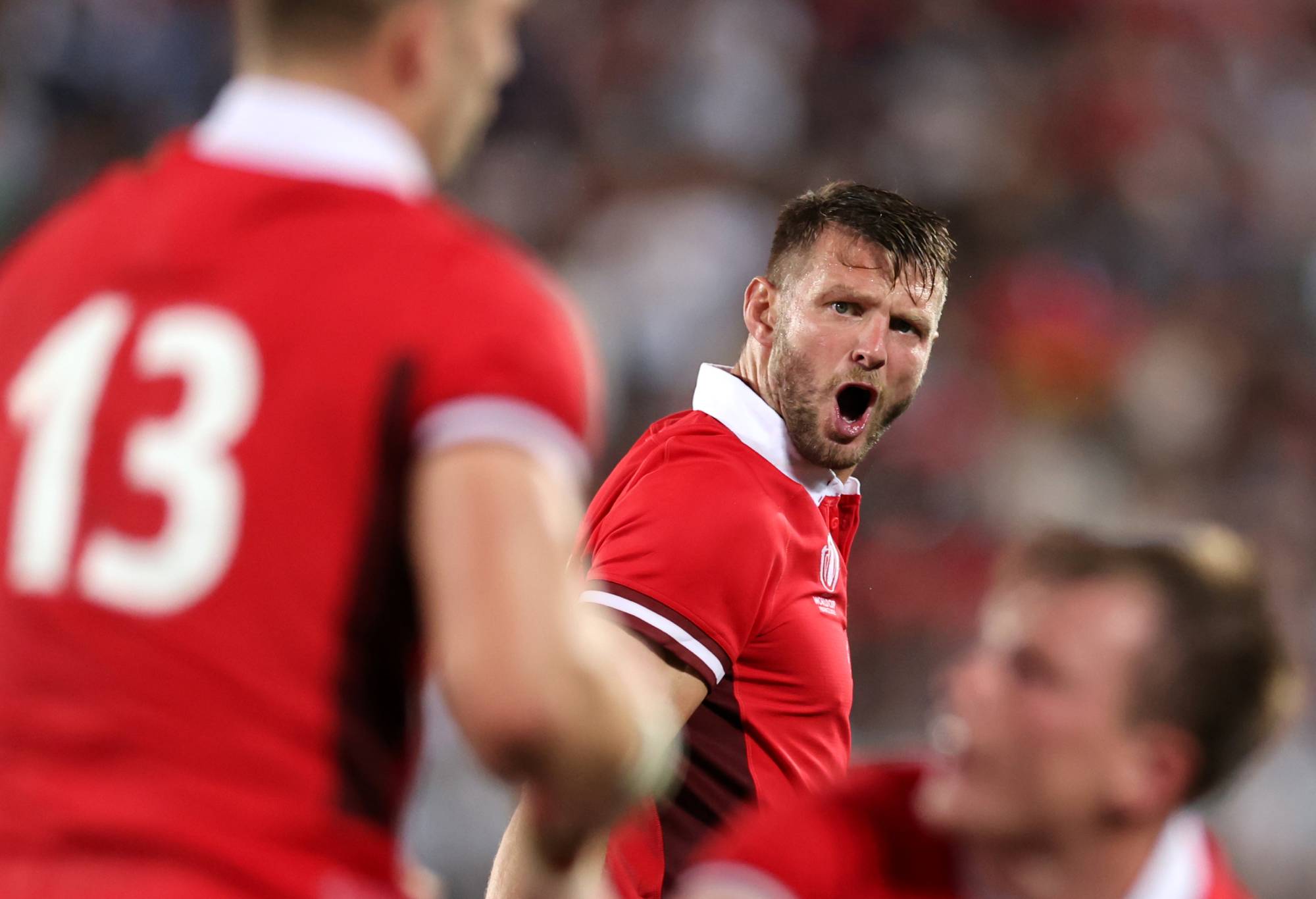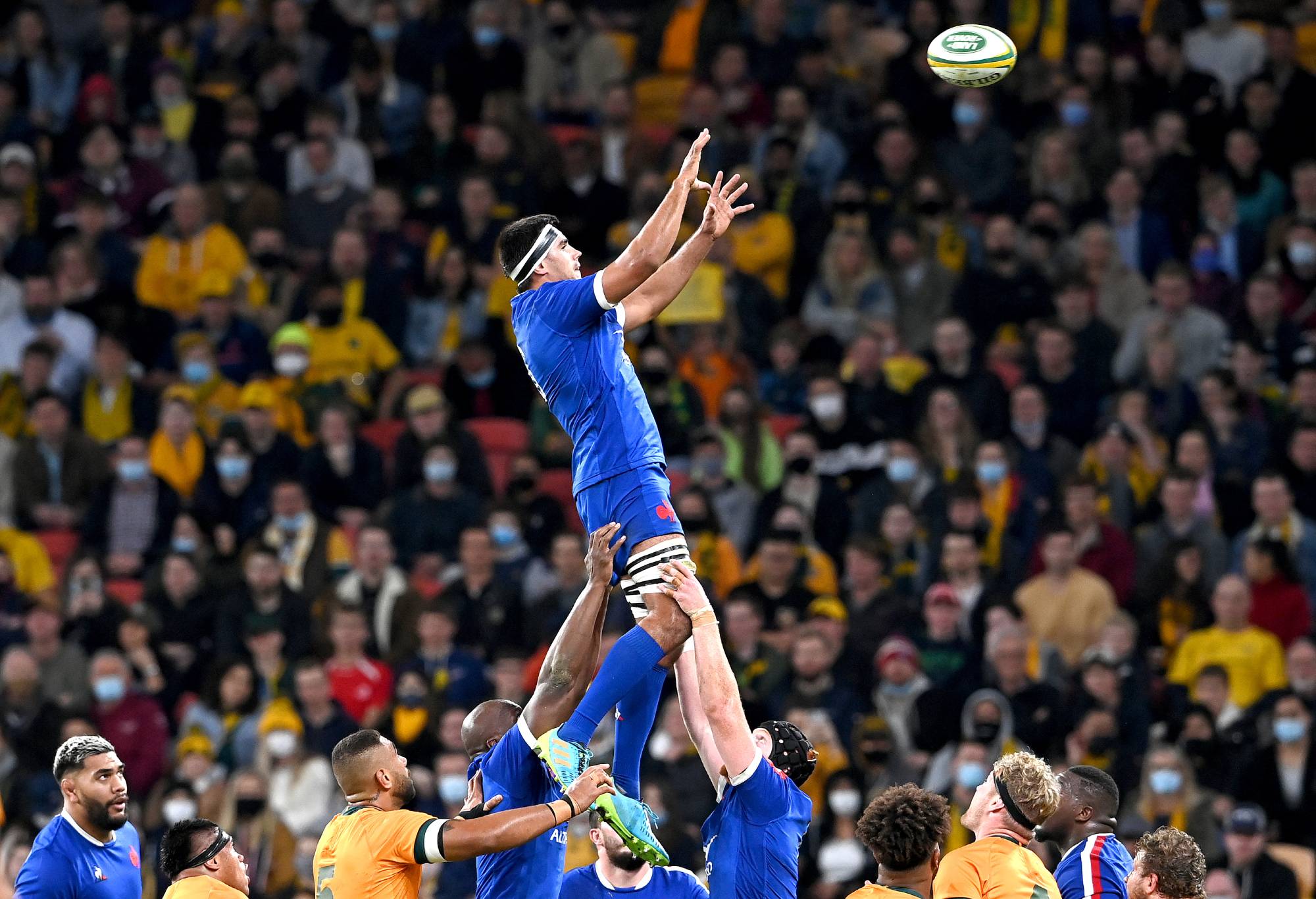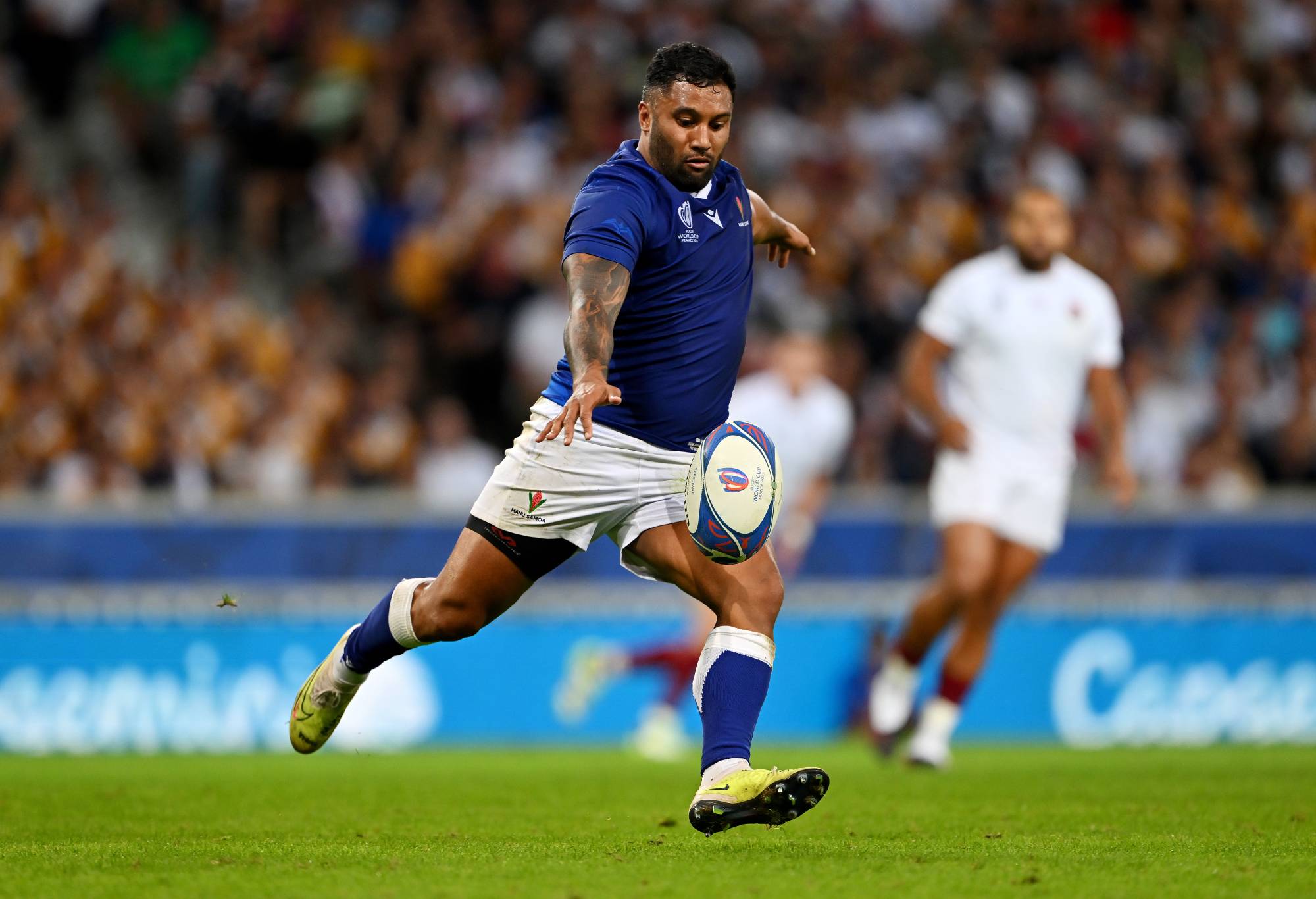Rugby urgently needs a makeover if it is to survive in the 2020’s.
It is still peddling a product which worked well when it was a rigidly amateur code, and the concept of a satisfying viewer experience was completely unknown. At that time it was purely tribal warfare and the thing which mattered was the win; how it was arrived at was generally not even considered.
Nowadays, an expensively professional code is trying to compete with other forms of entertainment and must brutally examine the game in all its aspects, to examine how it can attract spectators both at the ground and on the television.
CEO of Rugby Australia Phil Waugh made the point recently Rugby at the top level provided about 40 minutes of action in an allegedly 80 minute game. This has to improve, so set out below are some suggestions to get back on track.

The Wallabies and Springboks square off at a scrum.(Photo: Getty Images)
Scrap the scrum
Once upon a time, the scrum was a contest for ball possession; the hookers competed for the ball, which was supposed to be fed straight into the scrum, so that the ball could occasionally be won against the feed. Today, if the scrum holds up long enough, the halfback puts the ball into his own second row, and collects it at the back of the scrum. Consequently, the scrum, when it works, is a time-wasting way to give possession to the team which has not infringed.
Mostly however, the scrum collapses because of the unbelievable pressure the two front rows are put under by the mountains of muscle packing in behind them, and the fact most playing surfaces are simply not up to handling the tearing force of all those sprigs scrabbling for grip.
When that occurs, we have the spectacle of a referee, who has probably never packed down in a scrum in his life, instructing the two forward packs on the finer points of scrummaging, all in playing time. This is Monty Pythonesque – surely the only time in any sport at any level, outside of an intra-school game, when the match official does a spot of coaching in game time.

South Africa and England contest the maul. (Photo by Chris Hyde/Getty Images)
When the scrum collapses a second time, the referee usually awards a penalty to one side or the other, often provoking a fierce debate among the “expert’ commentators as to whether he was right or not. The time wasted can get up to 5 minutes per fiasco.
The scrum should be replaced by a tap kick with the offending team retiring 5 metres, with a gain of minutes (perhaps over ten) of playing time per game… and the mothers of props ever so grateful their sons’ necks have been saved from at least one source of potentially crippling injury.
Of course, we then face the bean counter’s problem of what to call the individual forwards, with props, second rowers, and breakaways no longer having scrum-related functions. We could conveniently go to the numerical nomenclature which is already established with 8, 9, 10, and 15 now being used routinely to refer to the lock, halfback, five-eighth, and full back.
Without the scrum, there would still be an urgent need for those 1.7 metre, 130 kilogram behemoths who currently people the international front rows of the world. They have to have that sort of low-to-the-ground build to be able to hurl a 120-140 kg lineout specialist 2 metres in the air on a regular basis and to survive in, and contribute to, the maelstrom which is the modern rolling maul.
A major benefit of a scrum-less Rugby Union is that the tempo of the game would be much higher, and that might attract top Rugby League forwards to the game that’s played in heaven, with a significant gain in mobility around the field.

Welsh flyhalf Dan Biggar. (Photo by Jan Kruger/Getty Images)
Speaking of Rugby League, the scrum has already been effectively scrapped in that form of the game, although a pretend scrum has been retained; twelve hearty chaps indulge, with zero effort, in a brief communal hug, while the halfback touches the nearest forward with the ball and then plays on.
In-game timing
Stop the clock when the ball goes out, and start it again when the ball is thrown in.
Ditto when a try is scored and when play resumes. Allow a set amount of time, outside of playing time, for the conversion attempt. This is to limit the incredible period which some kickers take now, apparently for prayer, channelling, or general meditation.
Revisit the lineout
Mandate an 8-man lineout, without exception.
Too often, some of the forwards loiter in the backline to stop the attacking backs, cluttering up a field in which we otherwise might get to see some free-flowing rugby. There has to be a time limit, again outside of game time, of say 10-30 seconds for the lineout to be set (that time to be nominated by someone who has studied lots of games), with the provision that any late arrival will see the lineout moved 5 or 10 metres downfield.
This should avoid the unedifying spectacle of some of the larger forwards loafing up to the engagement at their own pace, and of the thrower and decision maker having a long conference about where to throw to. The modern lineout, with lifting allowed, is a spectacular part of the game, but it should not swallow up precious playing time in the setting up.

Dylan Cretin of France competes at the lineout. (Photo by Bradley Kanaris/Getty Images)
Admittedly, this change contemplates the use of a non-forward (namely a winger) to throw the ball in, which will be a point of bitter dissension within the forward brotherhood, but in this era of 9-man rugby, wingers should be delighted to have something to do apart from signing autographs and waving to the crowd.
Scoring
The aim of any revisions should be to maximise running rugby. With that in mind, the points for a try should be increased to 6, and for the conversion to 3; the points for a penalty should be reduced to 2, and a field goal to 1 (following Rugby League, I admit). Under this scheme, a team with a sniper-like kicker cannot reasonably expect to dominate one which wants to play Rugby rather than ‘kickby’.
Penalty for a deliberate knock on
There is little to excite a spectator more than a clean intercept and resulting end-to-end runaway try. Paying a penalty for a deliberate knock on reduces the likelihood of an attempted intercept because an already high risk move (do I leave my man unmarked and go for the ball?) becomes much riskier if there is a fair chance it will result in a penalty and maybe three points to the other team.
The ‘red zone’ and a penalty try
How often do you see the attacking team camped within 10 metres of the try line while the defenders routinely infringe, giving the attacking team the option of an easy 3 points instead of 5 or 7? If a ‘red zone’, say 5-10 metres wide were declared at each end, then the second deliberate infringement in that zone during an attacking sequence could be the cause for a penalty try, getting rid of the seemingly endless sequence of advantage rulings and allowing the game to resume back in the middle of the ground.

Lima Sopoaga of Samoa kicks the ball clear. (Photo by Dan Mullan/Getty Images)
The television match official (TMO)
The TMO is an essential part of the refereeing process but often he or she is called on to adjudicate only on whether the ball has been correctly grounded when the line is crossed. Given the pile-ups which regularly seem to occur in the try-scoring process, the TMO’s advice is definitely needed at that point, but the review by the TMO should include the lead-up to the try.
Forward passes, for example, which are obvious to the TV audience are sometimes missed by the onfield referee and the line judges. The armchair critic should not be better informed than the one with the whistle so some broadening of the use of the TMO is warranted.
Things which need fixing… but are beyond this correspondent
The endless, aimless kicking by the two backlines has to be reduced. There is nothing worse than watching the fullbacks indulging in a private kick-to-kick while earnest ball-chasers sprint up and down the field hoping for a dropped catch. Perhaps, the ARU could buy in a top Rugby League five-eighth because the best of them have a wonderful tactical kicking game.
There also has to be some thought given as to how we can encourage actual backline movements (do you remember them?) in which the ball goes through the hands along the backline from halfback to winger.



















You must be logged in to post a comment Login